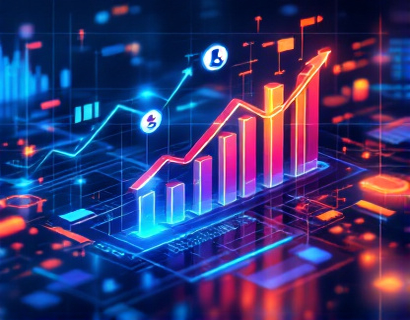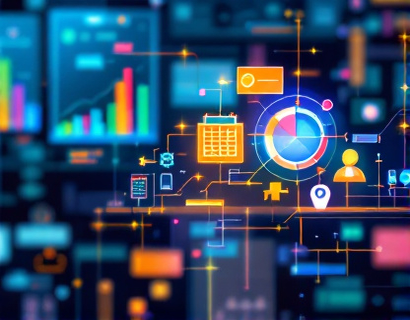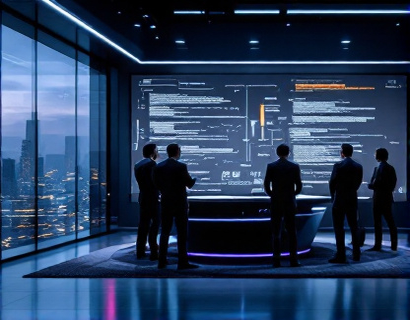Advanced Graphing Software: A Game Changer for Business Data Visualization
In today's data-driven world, businesses are inundated with vast amounts of information. The challenge lies not in collecting data, but in transforming this data into actionable insights that can drive strategic growth. Advanced graphing software has emerged as a pivotal tool in this process, offering businesses the ability to visualize complex data sets and derive meaningful conclusions. This article delves into the transformative power of advanced data visualization software, highlighting its role in enhancing business intelligence and fostering informed decision-making.
The Importance of Data Visualization in Business
Data visualization is the process of converting raw data into visual representations such as charts, graphs, and maps. This transformation is crucial because it allows business professionals to quickly grasp trends, patterns, and outliers that might be obscured in raw numerical data. The human brain processes visual information faster and more accurately than text-based data, making visualization an indispensable tool for effective communication and decision-making.
In a business context, data visualization serves multiple purposes. It aids in identifying market opportunities, optimizing operations, and forecasting future trends. By presenting data in an intuitive and accessible format, visualization tools empower businesses to make informed decisions swiftly, thereby gaining a competitive edge. Moreover, these tools facilitate collaboration among teams, as visual representations of data can be easily shared and understood by all stakeholders.
Key Features of Advanced Graphing Software
Advanced graphing software is designed to cater to the complex needs of modern businesses. These tools offer a range of features that go beyond basic charting capabilities, providing robust functionalities to handle large and intricate data sets. Some of the key features include:
- Interactive Dashboards: These allow users to create customizable dashboards that display key performance indicators (KPIs) and other critical metrics in real-time. Interactive elements such as drill-down capabilities and filters enable users to explore data in greater depth.
- Advanced Chart Types: Beyond standard bar and line charts, advanced software offers specialized chart types like heat maps, scatter plots, and treemaps. These charts are particularly useful for visualizing complex relationships and large data volumes.
- Data Integration: Modern graphing tools can integrate with various data sources, including databases, cloud services, and APIs. This seamless integration ensures that data from different systems can be consolidated and analyzed comprehensively.
- Machine Learning and AI: Some advanced tools incorporate machine learning algorithms to identify patterns and predict future trends. These capabilities enhance the software's analytical power, providing deeper insights and more accurate forecasts.
- Collaboration Features: Collaboration is a critical aspect of business intelligence. Advanced software often includes features that allow multiple users to work on the same project simultaneously, share insights, and provide feedback in real-time.
Enhancing Productivity and Strategic Planning
The implementation of advanced graphing software can significantly enhance productivity and strategic planning within an organization. By automating the process of data visualization, these tools save time and reduce the potential for human error. Users can focus on interpreting the data and making informed decisions rather than spending hours creating manual charts and graphs.
In terms of strategic planning, advanced visualization tools provide a comprehensive view of the business landscape. Managers can use these tools to analyze historical data, current performance, and potential future scenarios. This holistic approach enables the development of more accurate and effective strategies. For instance, a company can use visual analytics to identify areas of high customer engagement and allocate resources accordingly, or to pinpoint inefficiencies in the supply chain and implement corrective measures.
Case Studies: Real-World Applications
To illustrate the practical benefits of advanced graphing software, consider a few real-world case studies. A retail company used interactive dashboards to monitor sales performance across different regions and product categories. By visualizing this data, the company identified underperforming areas and adjusted their marketing strategies and inventory levels accordingly, resulting in a 15% increase in sales within six months.
Another example is a financial institution that employed advanced chart types to analyze transaction patterns and detect fraudulent activities. The heat maps generated by the software highlighted unusual activity in specific accounts, allowing the institution to take prompt action and prevent significant financial losses.
Choosing the Right Software for Your Business
With the multitude of advanced graphing software options available, selecting the right tool for your business can be challenging. Here are some factors to consider when making your decision:
- Data Volume and Complexity: Assess the size and complexity of your data sets. Ensure the software can handle large volumes of data and support the types of analyses you need to perform.
- User Interface and Ease of Use: The software should have an intuitive interface that is easy to navigate, even for users with limited technical expertise. Look for tools that offer guided tutorials and support resources.
- Integration Capabilities: Consider the software's ability to integrate with your existing systems and data sources. Seamless integration is crucial for a smooth workflow and accurate data analysis.
- Scalability: As your business grows, the software should scale with you. Opt for solutions that offer flexible pricing plans and can accommodate increasing data volumes and user counts.
- Customization and Flexibility: The ability to customize visualizations and reports to meet specific business needs is essential. Look for software that offers a wide range of customization options.
Future Trends in Data Visualization
The field of data visualization is rapidly evolving, driven by advancements in technology and changing business needs. Some emerging trends include:
1. **Augmented Reality (AR) and Virtual Reality (VR):** These technologies are beginning to be integrated into data visualization tools, allowing users to interact with data in immersive 3D environments. AR and VR can provide a more engaging and intuitive way to explore complex data sets.
2. **Real-Time Analytics:** With the increasing availability of real-time data, there is a growing demand for visualization tools that can process and display data as it is generated. Real-time analytics enable businesses to respond immediately to changing conditions and opportunities.
3. **Automated Insights:** Machine learning and AI are being used to automate the process of identifying insights from data. Future visualization tools may offer more sophisticated predictive analytics and recommendation engines, reducing the need for manual analysis.
4. **Collaborative Platforms:** As remote work becomes more prevalent, there is a need for visualization tools that support collaboration across geographically dispersed teams. Platforms that offer cloud-based solutions and real-time collaboration features will gain prominence.
Conclusion
Advanced graphing software has become an indispensable tool for businesses looking to transform their data into actionable insights. By providing intuitive visualization capabilities, these tools enhance productivity, support strategic planning, and drive growth. As technology continues to advance, the potential for data visualization to revolutionize business intelligence is immense. Organizations that embrace these tools and stay ahead of the curve will be better positioned to succeed in the data-driven landscape of the future.











































